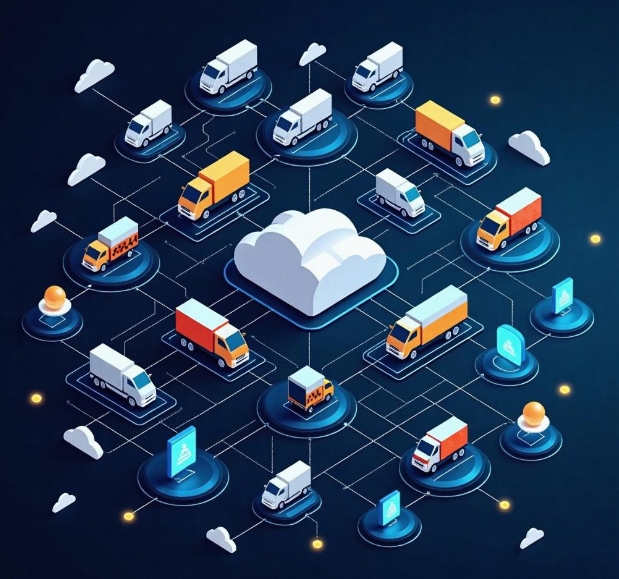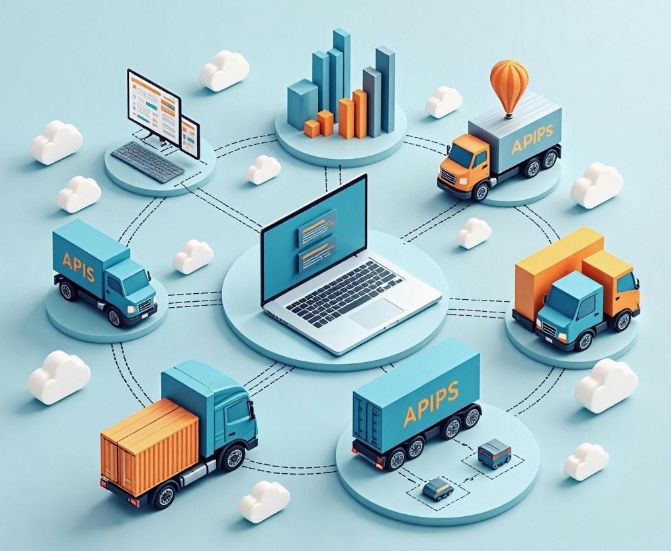Shenzhen Multi-User Mall Logistics Integration (Multi-Logistics API Integration)
- latest articles
- 1.DApp Development & Customization: Merging Diverse Market Needs with User Experience 2.Analysis of the Core Technical System in DApp Project Development 3.How to achieve cross-chain interoperability in Web3 projects? 4.How does the tokenization of points reconstruct the e-commerce ecosystem? 5.How to Set and Track Data Metrics for a Points Mall? 6.What is DApp Development? Core Concepts and Technical Analysis 7.Inventory of commonly used Web3 development tools and usage tips 8.Development of a Distribution System Integrated with Social E-commerce 9.Six Key Steps for Businesses to Build a Points Mall System 10.What is DApp Development? A Comprehensive Guide from Concept to Implementation
- Popular Articles
- 1.Future Trends and Technology Predictions for APP Development in 2025 2.Analysis of the DeFi Ecosystem: How Developers Can Participate in Decentralized Finance Innovation 3.From Zero to One: How PI Mall Revolutionizes the Traditional E-commerce Model 4.DAPP Development | Best Practices for Professional Customization and Rapid Launch 5.Recommended by the Web3 developer community: the most noteworthy forums and resources 6.From Cloud Computing to Computing Power Leasing: Building a Flexible and Scalable Computing Resource Platform 7.How to Develop a Successful Douyin Mini Program: Technical Architecture and Best Practices 8.Shared Bike System APP: The Convenient Choice in the Era of Smart Travel 9.How to Create a Successful Dating App: From Needs Analysis to User Experience Design 10.From Design to Development: The Complete Process of Bringing an APP Idea to Life
With the rapid development of e-commerce, the logistics industry plays a crucial role. Especially in Shenzhen, a key global logistics hub city, the demand for logistics integration from e-commerce platforms is increasingly growing. To meet the market's need for efficient logistics, multi-user malls in Shenzhen are gradually adopting multi-logistics API integration. This not only enhances logistics efficiency but also helps merchants better manage their delivery systems.
I. Background Introduction
Shenzhen, as China's Special Economic Zone and innovation capital, boasts robust logistics infrastructure and a well-established logistics system. Here, e-commerce businesses and consumers exhibit diversified demands for logistics services. In traditional e-commerce platforms, logistics systems are typically provided by a single courier company, requiring merchants to integrate with various courier companies to ensure timely delivery of goods. However, with the growth of e-commerce platforms and the expansion of business scale, merchants face increasingly complex logistics needs, particularly in terms of efficiency, speed, and cost control, necessitating solutions to more challenges.
Traditional logistics integration methods can no longer meet the demands of modern e-commerce platforms, especially when dealing with large-scale user bases and diverse products. To address these issues, e-commerce enterprises in Shenzhen have begun integrating multiple logistics API interfaces to achieve efficient cross-platform, multi-channel, and multi-logistics company integration. This solution offers e-commerce platforms more flexible choices while significantly enhancing the user experience.
II. Overview of Logistics API Integration
API (Application Programming Interface) integration refers to connecting and coordinating multiple systems through program interfaces. Logistics API integration involves integrating APIs provided by different logistics companies, enabling e-commerce platforms to simultaneously utilize services from multiple logistics providers, thereby offering consumers diverse options. This approach allows merchants not only to optimize delivery processes but also to select the most suitable logistics partners based on varying needs.
E-commerce platforms in Shenzhen adopting multi-logistics API integration typically access APIs from multiple mainstream logistics companies, including but not limited to SF Express, Shentong, Yuantong, and Zhongtong. These APIs provide end-to-end services from warehouse management to final delivery, ensuring efficiency, transparency, and traceability throughout the logistics process.
III. Advantages of Logistics Integration in Shenzhen's Multi-User Malls
Enhanced Logistics Efficiency
A significant advantage of multi-logistics API integration is the improvement in logistics efficiency. Traditional single-logistics methods often suffer from unstable delivery times and limited options. By integrating multiple logistics APIs, merchants can select the fastest and most suitable logistics company based on specific order requirements, ensuring timely delivery to customers.
Reduced Logistics Costs
In Shenzhen's e-commerce environment, logistics costs represent a significant operational expense for merchants. Multi-logistics API integration allows merchants to choose the most cost-effective logistics company for each order based on actual conditions. This not only reduces shipping expenses but also enables bulk operations and long-term partnerships to secure more favorable terms.
Improved Customer Experience
As consumers' expectations for shopping experiences rise, logistics has become a key competitive factor for e-commerce platforms. Through multi-logistics API integration, platforms can offer various delivery options, such as same-city express, cross-province delivery, and night delivery, meeting diverse customer needs and enhancing user satisfaction.
Increased Data Transparency
Multi-logistics API integration enables merchants to track logistics information in real-time, ensuring transparency throughout the delivery process. From order generation to dispatch, transit, and arrival, both merchants and consumers can monitor logistics status at any time, reducing issues caused by information asymmetry.
IV. Implementation Process
Selecting the Appropriate Logistics API Platform
When implementing multi-logistics API integration, merchants first need to choose a suitable logistics API platform. Shenzhen has many third-party logistics platforms offering API interfaces. Merchants can select platforms that cover multiple logistics companies based on their business characteristics. For example, they may opt for platforms integrating mainstream couriers like SF Express, Shentong, and Yuantong to ensure comprehensive logistics options.
System Development and Integration
After selecting the logistics API platform, merchants need to integrate these APIs into their e-commerce systems. This process typically involves developers who call APIs from different logistics companies to enable functions such as order information transmission, logistics service selection, and real-time logistics tracking. During development, merchants must ensure seamless integration with multiple logistics APIs to avoid errors due to interface incompatibility or data transmission issues.
Debugging and Testing
After system development is complete, merchants must conduct comprehensive testing to ensure all logistics APIs function correctly. This includes verifying normal order transmission, accurate logistics updates, and interface response speeds. Through repeated testing and optimization, merchants can ensure stable system operation.
Launch and Maintenance
Once tested, the system can be officially launched. During operation, merchants need to perform regular maintenance and updates to keep interfaces up-to-date and address technical issues. Only through long-term operation can merchants fully realize the maximum value of multi-logistics API integration.
V. Case Study of a Shenzhen E-commerce Platform
Taking a large e-commerce platform in Shenzhen as an example, after integrating multiple logistics APIs, the platform achieved a comprehensive upgrade in logistics management. Previously, the platform relied on a single courier company for deliveries, but as order volumes increased, issues with delivery timeliness and costs became apparent. By integrating multiple logistics APIs, the platform could select suitable logistics companies based on customer needs, thereby improving delivery efficiency and reducing costs. Additionally, the platform could track each order's logistics status in real-time, and customers received timely updates, significantly enhancing the shopping experience.
VI. Future Development Trends
As the e-commerce industry evolves, logistics integration demands will become increasingly complex. In the future, logistics API integration will extend beyond traditional courier companies to include emerging areas such as smart logistics and unmanned delivery. As an innovation hub, Shenzhen is expected to lead in this field, continuously driving the digital and intelligent development of e-commerce logistics.
VII. Conclusion
Through multi-logistics API integration, Shenzhen's multi-user malls provide merchants with efficient, flexible, and transparent logistics solutions. As technology advances, future logistics systems will become more intelligent and automated, delivering better shopping experiences for consumers and higher operational efficiency for merchants. Through continuous innovation, Shenzhen's e-commerce platforms will continue to lead in the logistics sector, driving further global development in e-commerce logistics.
-

How does the tokenization of points reconstruct the e-commerce ecosystem?
With the continuous advancement of internet technology and the gradual prolifera···
-

How to Set and Track Data Metrics for a Points Mall?
With the rapid development of the e-commerce industry, points malls, as a common···
-

Development of a Distribution System Integrated with Social E-commerce
With the rapid development of internet technology, the e-commerce industry has e···

 Blockchain
Blockchain












